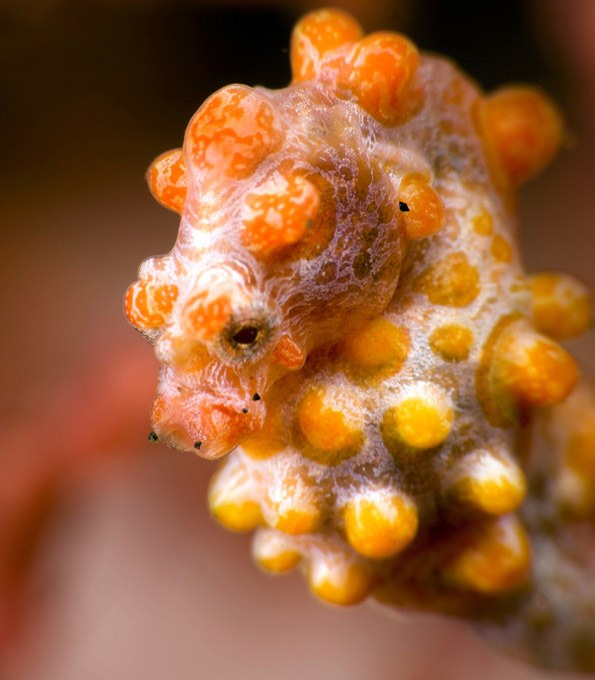Small Wonders
Last week, we blogged about another master of camouflage, the halimeda crab; That article was inspired by a video (shared in the article) from North Sulawesi dive instructor ‘liquidguru.’ Turns out, liquidguru is an underwater videographer extraordinaire with a knack for capturing footage of extremely interesting Indo-Pacific animals. We’ll share more of his outstanding videos throughout this week.
His video of a yawning Bargibanti’s Pygmy Seahorse (Hippocampus bargibanti) served as this article’s muse.
Fair warning:
When this diminutive (adult) pygmy seahorse opens its tiny mouth at around 0:55 minutes, your heart might just melt.
The Bargibanti’s Pygmy Seahorse was the first pygmy seahorse discovered, and was officially described in 1970. So effective is its camouflage that scientists did not know these seahorses even existed until they accidentally stumbled upon them when examining the host gorgonian corals of the genus Muricella (M. paraplectana or M. plectanagorgornians), which Bargibanti’s Pygmies exclusively cling to. Since the year 2000, at least six other pygmy seahorse species have been formally described.
The most notable distinction of pygmy seahorses is, of course, their tiny size. Adults only grow to approximately 0.50 to 1.0 inches (14 to 27mm) in length. They are so small that unlike fish and other seahorses, pygmy seahorses only have a single continuous gill slit on the back of the head.
As with other seahorses, pygmy seahorses are paternal brooders; The father incubates fertilized eggs until he gives live birth. The notable difference between pygmies and other seahorses is the location of the male’s pouch; The former’s pouch is located at the bottom of central trunk whereas the latter’s pouch is located at the top section of the tail.
Not much information is known about the exact diet of these tiny animals. The Bargibanti’s Pygmy Seahorse may feed on zooplankton trapped by gorgonians and may even feed on gorgonian tissue as well.
-

- A close-up of a pygmy seahorse on gorgonian . Keep in mind this guy is less than half the size of your thumb.
If, after watching the video and photos, you yearn for a Bargibanti’s Pygmy Seahorse of your own … let that dream go. Several public aquaria have attempted to keep these beautiful animals in captivity, and all have failed. These are animals best appreciated in their natural habitat.
To learn more about pygmy seahorses, visit Richard Smith’s Ocean Realm Images website. Dr. Smith is the first person to earn a PhD on the biology and conservation of pygmy seahorses. His website has a lot of photos and information about these small wonders.











0 Comments